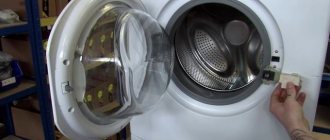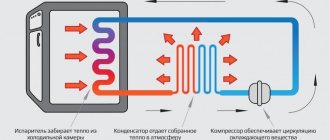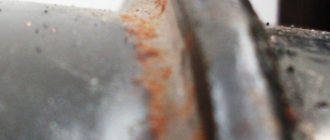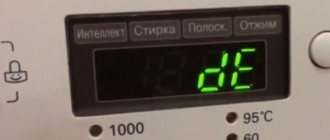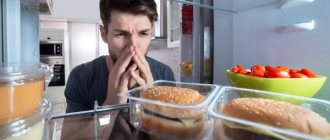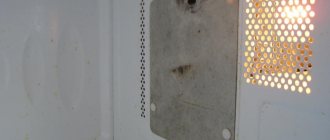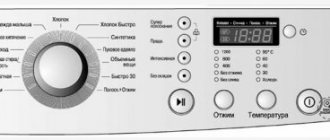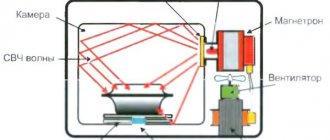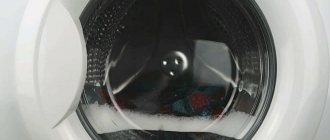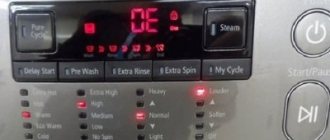Obviously, the refrigerator is one of the most important items in the kitchen. After all, it is thanks to the refrigerator that it is possible to preserve food or cool it for a longer time. In the modern world, not a single housewife can imagine life without this unit. Therefore, it is very important to maintain the refrigerator in working condition, promptly identify and correct any breakdowns. Even if it's just a door that doesn't close tightly. It would seem that what could be terrible about this?
The problem is that the door of the refrigerator ensures its tightness, which allows the temperature inside to remain low for a long time. If the refrigerator door does not close tightly, the entire unit will soon fail. Because in order to maintain a low temperature, if the door breaks, the cooling system will have to work continuously, which will significantly increase its wear and therefore reduce the service life of the refrigerator.
Reasons associated with equipment failure
Reason No. 1. The seal is broken
The seal is a rubber gasket that runs around the perimeter of each outer refrigerator door. Often there is also a magnet inside the seal, which allows the door to fit more tightly to the refrigerator. If not properly cared for, rubber can quickly fail, causing loss of elasticity, drying out, and cracking. This, in turn, can lead to rupture of the seal itself. At the rupture points, cracks form through which warm air enters the refrigerator.
Reason No. 2. The door is deformed
If the door is, for example, warped or dented, this may prevent a tight seal. This may, of course, not be entirely obvious at first glance, but if you take a closer look, everything will be clear. After all, most often refrigerators have a glossy surface, which perfectly highlights all the curves on a flat surface.
Reason #3: Loops
Like any doors, refrigerator doors are held on hinges. If the hinges are not properly maintained for a long period of time, the refrigerator door may become difficult to open and close, which may result in the door not closing properly.
Reason No. 4. Spacer element
The spacer element is the part that ensures the door opens sufficiently. Externally, it is presented in the form of an arc made of plastic or metal. If this part becomes loose and fails, you may notice that the refrigerator door is pushed away from the body.
Why does the door not close well?
If the refrigerator door does not close tightly, you can notice this even in the absence of a signal sensor. Snow and ice on the walls of the chamber indicate continuous operation of the motor. The refrigerator tries to compensate for warm air, so its components wear out.
No matter how modern your equipment is, the problem with the door needs to be solved urgently. What to check first:
- Check to see if there is a foreign object stuck between the door and the body that is causing it to not close. If so, it is enough to eliminate the interference and calm down.
- Using a building level, check how level the equipment is installed. A slight deviation is only allowed backwards, otherwise the door will open randomly. Try adjusting your legs to regain balance.
Why are there problems with the door:
- It's a sealant problem. The rubber cuff has become worn and leaky from time to time; it is dirty, so it doesn’t stick well to the body. Problems with the seal occur if the door is often opened or slammed hard when closing.
- The door fastenings are loose, so the chamber does not close hermetically.
- The spacer element, which is located at the bottom of the door, has worn out. Thanks to it, the chamber opens and closes smoothly. Since the spacer is plastic, it could get damaged.
- If the door feels like it is pushing away from the body, the stem is probably not positioned correctly. This part is responsible for turning on the light. The position of the rod needs to be changed.
- When you are sure that you closed the refrigerator properly, but the sensor signals that it is not closed tightly, it means that it needs to be replaced.
What to do if there is a malfunction? These are minor breakdowns, so you can handle them yourself.
Reasons not related to equipment breakdown
Reason No. 1. Seal contamination
Thanks to the seal, tightness is ensured. If the seal has not been cleaned for a long time, it will inevitably become dirty. If the accumulations of dirt are too large, they will certainly begin to interfere with the door closing tightly.
Reason No. 2. The refrigerator is not installed correctly
The problem is that not much attention is paid to the installation of the refrigerator, and the most important criteria for placement are that it fits well into the interior and does not interfere. But there is one more very important nuance. The refrigerator must be installed level. So, if the refrigerator is installed tilted forward, it is quite difficult to ensure that its door closes tightly.
Reason #3: The stem is too close
The rod is a part for lighting the refrigerator chamber. In modern models, a defect due to incorrect installation is rarely found, but you should not exclude it. If the door seems to push back when closing, the reason may be that the rod is too close and needs to be moved.
Reason No. 4. Placing dishes inside
There are often cases when a plate that is too wide simply does not allow the door to close tightly, resting its sides against the back wall. Therefore, before sounding the alarm, you should carefully check the dishes that are in the refrigerator.
Reason No. 5. Overloading of shelves
On the refrigerator doors there are separate small shelves for storing small items. If these shelves contain too many or heavy items, the door holding the shelves may not close tightly.
The main reasons why the door may not close
The most common reasons are related to the carelessness of the owners:
- The installation location does not meet the safe operation requirements specified in the operating instructions. Alternatively, placement on a long-pile carpet, or the support legs are not adjusted in height if installed on an uneven surface
- Any object that prevents the door from closing tightly. This could be an element from the dishes: a handle, a lid, a pull-out section for vegetables and fruits that is not pushed in all the way.
The following technical factors can also be considered as probable causes of failure:
- Wear and tear of the rubber seal over time is a natural phenomenon that occurs as a result of frequent opening and closing, dirt and grease getting on the elastic surface. The result is drying out and abrasion of the sealant.
- The fastening mechanism and the spacer mechanism have become loose, which can lead to spontaneous “repulsion” of the door when there is a strong slam
- Door deformation caused by overloading of internal shelves.
Consequences of a leaky door closure
Obviously, one thing that fails can lead to complete breakdown of the refrigerator. Here are some of the not-so-pleasant consequences of a door that is not tightly closed.
Compressor
The compressor is the part of the refrigerator that cools the air inside the refrigeration chambers. The compressor operates intermittently, since under sealed conditions the air does not need constant cooling. If the seal of the refrigerator is broken, there is a constant supply of warm air, which, in turn, does not allow the compressor to cool the air to a certain temperature and forces it to work continuously.
Therefore, if a loose door was not repaired in time, and the refrigerator began to rattle more, this means that the compressor will soon also fail.
Short circuit
If a door that does not close tightly causes the compressor to break down or increase the load on it, a short circuit may occur, which will lead to a fire or the release of harmful elements that are released when the plastic melts.
Food spoilage
If a door malfunction occurs during the warm season, the warm air entering the refrigerator chamber can lead to a fairly high positive temperature, which will certainly lead to spoilage of some food products.
Thermostat failure
The thermostat is the part that controls the temperature in the refrigerator compartment. If the temperature is unstable and warm air comes from outside, the thermostat can easily fail, and after it the compressor will certainly break down, because without a thermostat it will be impossible to determine the temperature in the refrigerator chamber and understand whether cooling is required.
What can result from a refrigerator seal failure?
A tightly fitting door creates a sealed space inside the refrigerator . It maintains the temperature required for storing food, which is monitored by temperature sensors.
If the door begins to move away and does not fit tightly to the body, warm air enters the chamber . Sensors signal the compressor when the temperature rises, and it begins to work, cooling the air. Since the refrigerator is not sealed, heat flows continuously and the motor does not turn off.
Sensor readings are constantly changing, temperature conditions are unstable. The system is working at maximum. At the same time, the parts wear out, and the food is either not cooled enough or is frozen. Such operation leads to overheating of the compressor or its breakdown.
Methods for checking tightness when the door does not close
To check the refrigerator for leaks, use a probe test. They operate as follows :
- A strip 5 cm wide is cut from a white sheet of paper.
- The strip is placed across the rubber seal and the door is closed.
- They are trying to pull out the dipstick.
If the paper is tightly fixed, then the seal is airtight . If it comes out easily or falls out, there is a gap. The check is carried out along the entire perimeter of the refrigerator and freezer compartments.
To identify leaks in the refrigerator, use a powerful LED flashlight . The test is carried out in the dark. The switched-on device is placed in the refrigerator and the door is inspected around. No streaks of light should be visible. If the rays leak through, it means that the seal in this place is not airtight.
Replacing the seal
If the problem is that the seal has ruptured, then it needs to be replaced. Of course, you can contact a specialist who will do this work, but often you can make the replacement yourself.
The first thing to do is turn off the refrigerator.
After turning off, you need to wait about half an hour. At this time, for convenience, you can remove the door and position it horizontally. Next you need to remove the sealing tape using a screwdriver. This must be done carefully so as not to damage the door itself. Then clean the channel under the rubber seal. For cleaning, use a soap solution or a mixture of water and vinegar, depending on the degree of contamination. Afterwards you need to dry the cleaned surface.
After preparing the door, the sealing tape is stretched around its perimeter and installation is carried out. The type of installation method depends on the fastenings provided; it can be glue or self-tapping screws. It is very important to install the whole thing and not in sections. At the end of the installation, everything is thoroughly dried with a hairdryer and an inspection is carried out to ensure that the seal fits tightly when closing the refrigerator. When installed correctly, the door is perfectly attached to the body without gaps.
What to do if the refrigerator door sticks
The first thing you should do if the refrigerator door is difficult to open is wait. If your equipment is working properly, the problem will be fixed in a minute. Moreover, a tight-fitting flap indicates that the products are stored correctly and you will not need to replace the sealing rubber for a long time.
If you cannot open the device again after 5 minutes, this indicates a blockage in the drainage system. To eliminate it, take a long toothpick or 20 cm stiff wire and lower it into the drain hole. If self-cleaning does not help, contact a specialist. He will carry out professional cleaning with special tools. Without them, you risk damaging the internal parts of the system.
Often the cause of a door's tight movement is the seal. When washing your equipment next time, pay special attention to this area: wash the elastic with a mild fat-dissolving agent and rinse thoroughly with a soft sponge. It is not recommended to rub it with hard brushes or use strong reagents. Remember that rubber materials wear out in 5-8 years, so it is often easier to replace the seal than to try to revive it and risk the temperature regime of the entire system.
Sometimes you may feel that the door opens and closes very tightly. This indicates that the hinges are tight during assembly and will need to be lubricated and loosened as necessary.
Adjusting the refrigerator door
There are times when, in order to fix a door, you just need to adjust or rehang it. This, too, most often does not arise difficulties. But it is worth noting that it is better to do the work together, because the doors are quite heavy.
When re-hanging the door, the refrigerator is also left unplugged for 30 minutes. If possible, remove the protective covers at the top and bottom. Next, unscrew the bolts from below using a special screwdriver. Then unscrew the bolts at the top and remove the door. With the help of a partner, the door is placed on the opposite side and secured with bolts, starting from the top. Then they hide the visible holes with plugs and return the protective covers to their original places.
Know the principle of alarm operation
Modern refrigerator models warn of a problem with a sound and light signal. The sound appears when there is active heat entering the chamber. This alert attracts attention and helps to quickly respond to incorrect operation of equipment.
Why does the refrigerator beep when the door is closed? I’ll list the main reasons:
- The rubber band does not fit and the temperature in the chamber is higher than the specified characteristics.
- The indicator is broken.
- Excessive ice has formed in the freezer.
- Violation in the signal chain.
- The door does not fit tightly - food or dishes located inside interfere with closing.
- The sensor is triggered when a large amount of warm food is loaded. The electronics “think” that the refrigerator door is not closing.
- Operation in intensive freezing mode.
Timely response to an alarm helps prevent unit breakdown.
Working with increased load leads to wear of the main parts and the motor.
How to prevent a malfunction?
Of course, it is much easier to prevent a refrigerator from breaking than to repair it. What needs to be done to avoid problems with the door?
- When cleaning the refrigerator, pay special attention to the rubber seal. Clean only with mild detergents. After washing, dry thoroughly.
- Do not load the shelves located on the door, as this can lead to misalignment of the axle and hinges.
- Lubricate the hinges with special oil at least once every three years.
- When opening the refrigerator door, grasp the handle, not the seal.
- Don't slam the door.
- Stick to the three minute rule. If the door was closed, open it only after this time has elapsed. Since after closing, a pressure difference occurs in the refrigerator chamber, which causes stronger adhesion of the seal. If you open the refrigerator earlier, this can lead to microcracks, which will lead to destruction and breakage of the seal.
- If you suspect a breakdown of any part, make timely diagnostics.
- Entrust repairs of increased complexity to professionals.
Very often, the rules for caring for home appliances seem too boring. Everyone thinks that such breakdowns are not about them. However, this is not at all true. Even the newest equipment models are susceptible to breakdowns if not properly maintained.
That is why it is important not to ignore the rules for using home appliances and to take proper care of them. It is much more profitable to keep the equipment that you have in order than to constantly purchase new ones or carry out repairs without understanding your mistakes.
If there is a suspicion that any part is broken, it is very important to identify the reasons in a timely manner. As it turns out, in the case of a refrigerator door, this is not so difficult, you just have to pay attention and put in a little effort.
How to Prevent the Refrigerator Door Open Problem
In practice, many problems with refrigerators are associated not so much with the wear of spare parts, but with non-compliance with the rules prescribed in the instruction manual. Therefore, to avoid unwanted effects, it is important to remember a few recommendations:
- Treat your household appliance with care. Don't slam the door as hard as you can
- Do not open the equipment immediately after closing
- Monitor the appearance of the seal and clean it if necessary.
Following these simple tips is the key to long-lasting operation of your favorite equipment.
Household appliances Refrigerator
Solution if the refrigerator door is difficult to open
- Press your finger inside the corner of the door gasket to bleed air and make it easier to open the door soon after closing.
- If the door has just been closed, wait approx. one minute before opening it again.
- Do not slam the door while closing it.
- Make sure the appliance is level. Adjust the foot at the bottom of the unit and check the alignment using a spirit level.
- Check the hinges for damage and replace damaged hinge parts if necessary.
- Contact an authorized service center.
Finding out the reasons
Why is the refrigerator door difficult to close? There can be many reasons.
The instructions presented in the table will tell you by what signs you can determine the cause of the malfunction:
| Image | Description |
| Reason 1. Something inside is interfering. Perhaps the refrigerator door does not close tightly because it is full of food and something is preventing it from closing hermetically.
| |
| Reason 2. Rubber seal. The seal is too dirty and greasy, so the door does not close (example in the photo). The seal has worn away due to age, so it does not maintain the tightness of the chamber. | |
| Reason 3. Breakage of the spacer element. Perhaps the refrigerator door does not close because the spacer element has become loose. | |
| Reason 4. Door deformation. If the door is constantly overloaded with heavy food or bottles, it will no longer seal properly. | |
| Reason 5. Tilt. If the refrigerator is placed on an uneven floor (at an angle), the closing mechanism may not work. |
How to check the tightness of a refrigerator? Take a regular sheet of paper and press it with the door. If it fits tightly, everything is in order, if not, you need to eliminate the causes of the malfunction.

